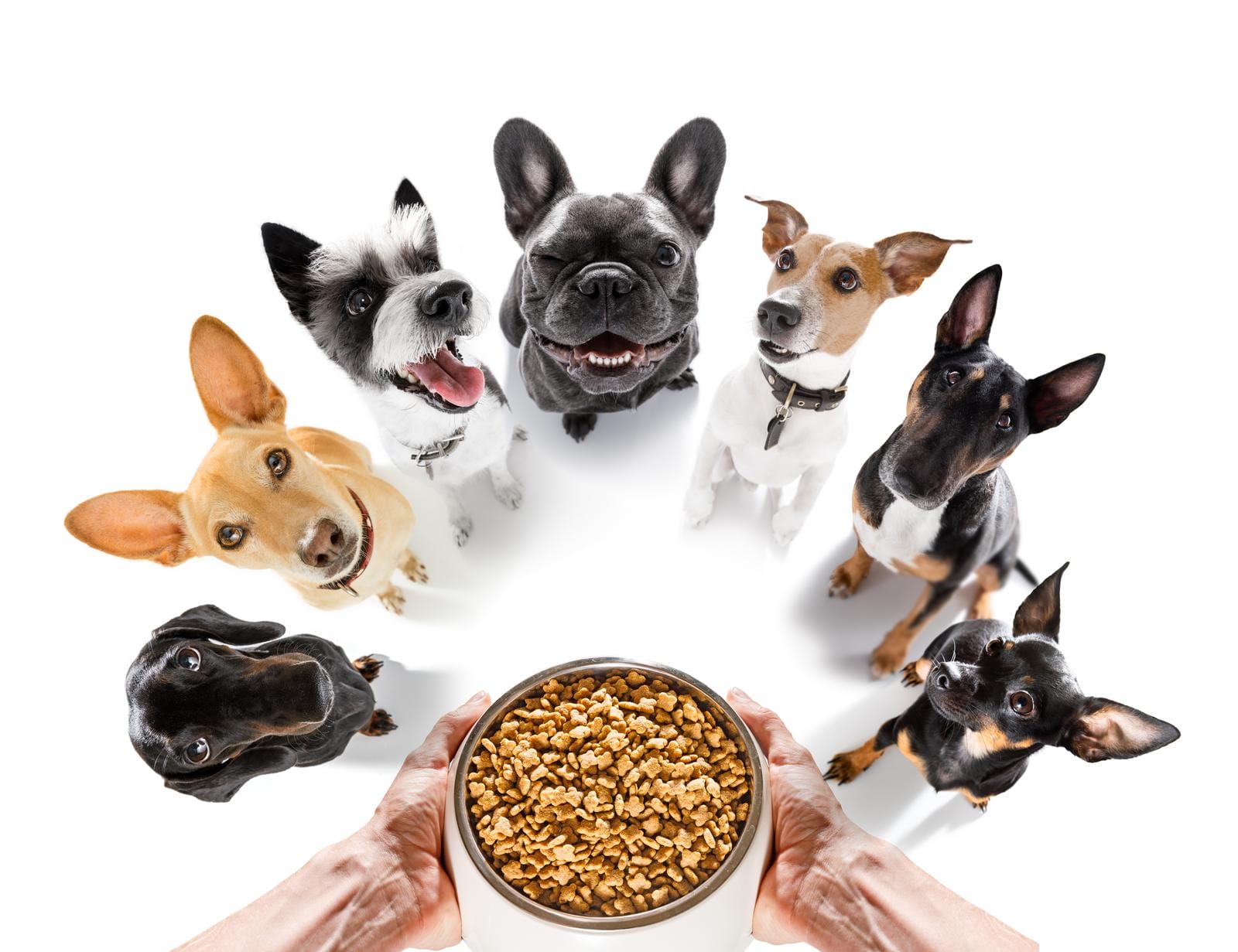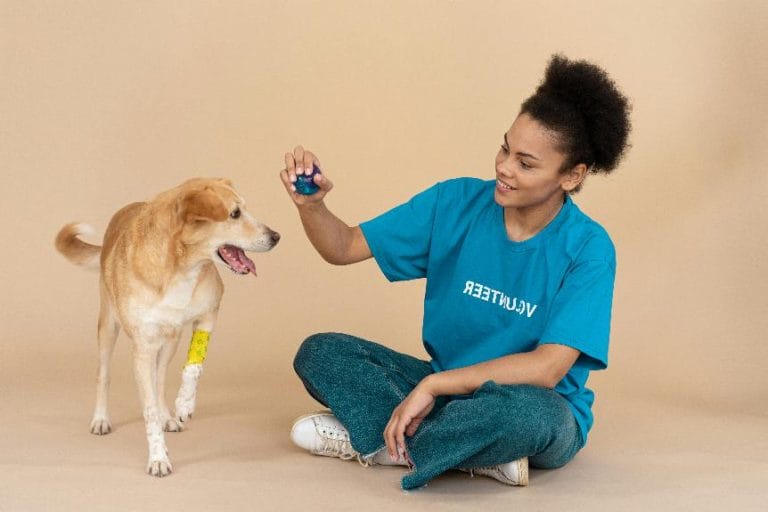If you’re like most of us, your dog isn’t just a pet – they’re a part of the family. So, isn’t it super important to make sure they’re living their best life?
What if I told you that you could make your furry friend happier and healthier while also saving the planet?
Yes, it’s totally possible, and we’re here to show you how! In this guide, you’ll discover cool, effective ways to keep your dog safe and loving life, all while cutting down on your environmental impact.
Eco-Friendly Dog Food and Treats Options
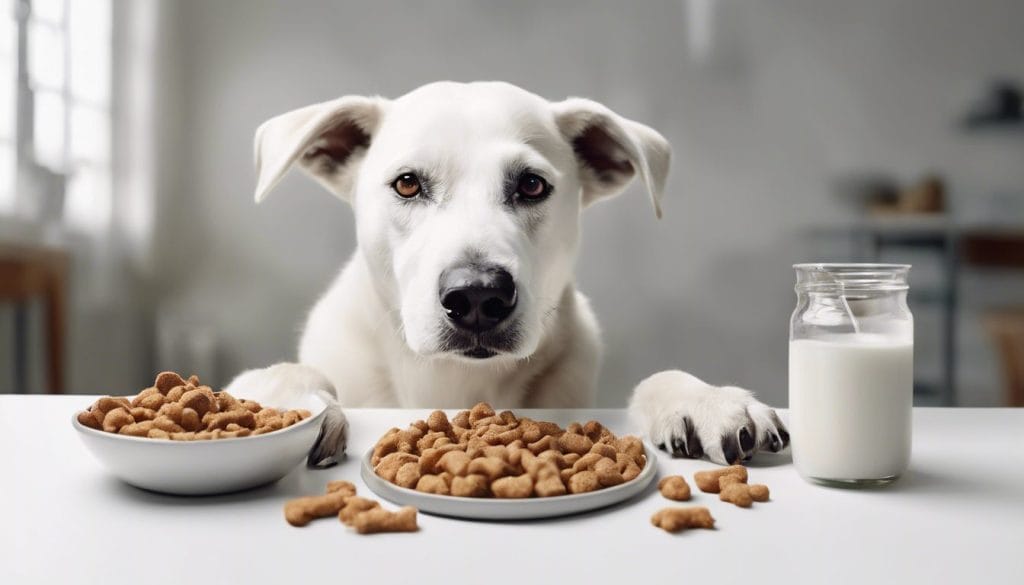
Eco-friendly pet food and treat options are increasingly available as pet owners seek to reduce the environmental impact of their furry friends. Here are some sustainable dog food brands and practices that focus on eco-friendliness:
Sustainable Dog Food Brands
- Portland Pet Food Company – Known for using simple ingredients, this brand offers both grain-free biscuits and wet food options.
- The Honest Kitchen – Offers eco-friendly dog food ingredients, providing meals that mimic high-quality human food standards.
- Petaluma – This brand stands out for being vegan and using solar power for production. It sources ingredients from organic, biodiverse farms and focuses on compostable packaging.
- Jiminy’s Good Grub – An eco-friendly option that is high in protein and easy to digest, focusing on sustainable practices.
- Halo Holistic Adult Dog Vegan Plant-Based Recipe with Superfoods – Offers a plant-based diet for dogs, incorporating superfoods into the recipes.
- Wild Earth – Utilizes innovative ingredients like yeast and chickpeas to create nutritious vegan food for dogs.
- Pezzy – Focuses on making treats from invasive fish species, helping to address biodiversity issues while providing low-calorie treats.
Sustainable Practices and Ingredients
- Local Sourcing and Organic Ingredients: Many eco-friendly brands use locally sourced, natural, organic, and non-GMO ingredients to minimize transportation emissions and ensure purity and sustainability.
- Alternative Proteins: Some brands incorporate less conventional protein sources like insect protein, which requires less land, water, and feed compared to traditional meat sources.
- Eco-Friendly Packaging: Brands are increasingly using recyclable or biodegradable packaging to reduce waste. Some even offer refillable or reusable packaging options.
- Sustainability Certifications: Look for certifications like USDA Organic, Rainforest Alliance, and Certified Humane, which indicate adherence to specific sustainability and ethical standards.
Homemade Sustainable Dog Treats
For those interested in DIY options, making dog treats at home can be a sustainable practice. Ingredients like pumpkin, apples, coconut oil, sweet potato, and peanut butter can be used to create healthy treats without the need for packaging.
Eco-Friendly Dog Supplies and Toys Choices
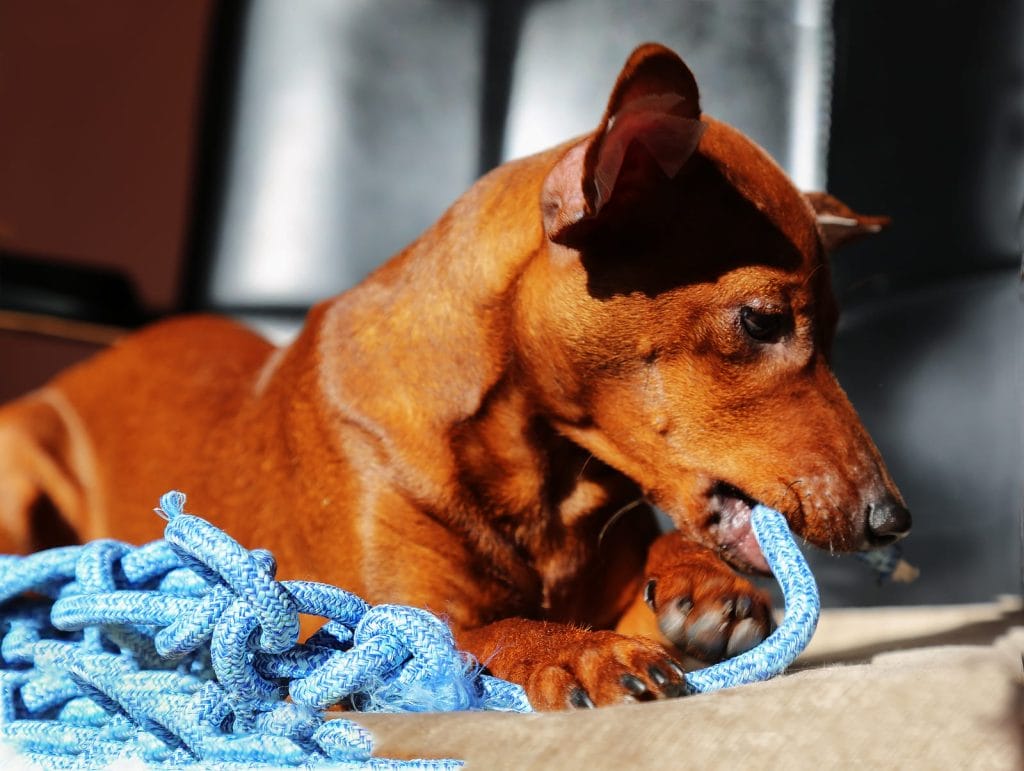
Toys
The right toys for your dog can equally be fun as eco-friendly. Here are some good options:
- Natural Material Toys: Look for toys made from organic cotton, hemp, recycled rubber, or coconut fiber. These materials are safe and good for the environment.
- Coconut Husk Stuffed Plush Toys: These plush toys are great for cuddling and are filled with natural coconut husk.
- Recycled Rope Toys: Some ropes are made entirely from recycled water bottles.
- Handmade Alligator Toys: These unique toys are crafted from natural suede leather with coconut fiber stuffing.
- Hemp Tug Rope Balls: Tug ropes made from sustainable hemp are durable and fun for interactive play.
- Recyclable Toys: Zogoflex and Seaflex toys are designed to be recycled over and over again.
Other Supplies
Besides toys, there are other dog supplies that can be eco-friendly too:
- Sustainable Beds and Blankets: Look for dog beds and blankets made from sustainable fabrics.
- Insect Repellent Sprays: Safeguarding your dog from insects can also be done in an eco-friendly way.
- Biodegradable Waste Bags: Opt for biodegradable pet waste bags to help reduce plastic waste.
- Durable Dog Supplies: Choose items made from recyclable materials or those that are biodegradable.
When you select eco-friendly dog products, always check that they are made from materials that are safe, sustainable, and non-toxic. This ensures that you’re doing the best for both your pet and the planet. Brands like Only Natural Pet, West Paw, Beco Pets, Spunky Pup, and Planet Dog offer various eco-friendly options that you might find suitable.
Incorporating Eco-Friendly Practices into Pet Care
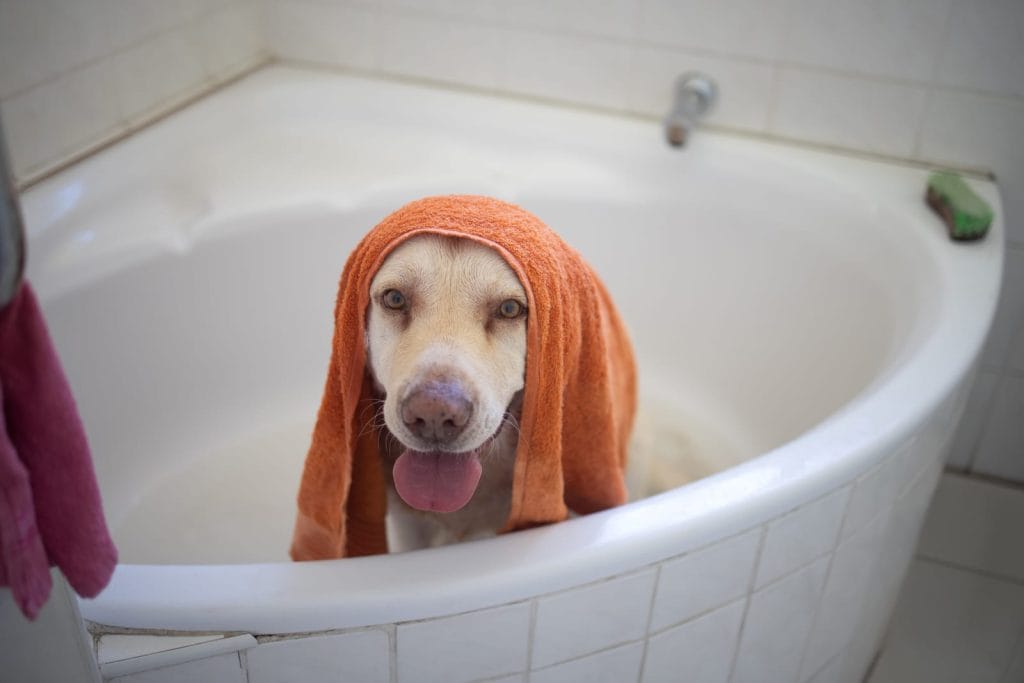
Sustainable Dog Grooming
Adopting eco-friendly grooming practices is a direct pathway to reducing environmental impacts while caring for your dog. Consider these strategies:
- Use Natural, Non-Toxic Shampoos and Detergents: Choose products that contain biodegradable ingredients and are free from harsh chemicals. This not only protects the earth but also your dog’s skin and coat.
- Compost Shed Dog Hair: Dog hair can be composted and added to your garden as a natural fertilizer. It decomposes over time and enriches the soil.
- Replace Disposable Wipes with Reusable Alternatives: Opt for washable grooming cloths that can be reused multiple times, reducing waste significantly.
- Invest in Quality Grooming Tools Made from Sustainable Materials: Tools like bamboo brushes are not only durable but also made from a highly renewable resource.
- Support Small, Local Pet Grooming Businesses: Local services often have a smaller carbon footprint compared to their larger counterparts. Supporting them also helps boost your local economy.
Reduce Waste
Minimizing waste in dog care not only supports the environment but often leads to more mindful consumption:
- Opt for Dog Food and Treats with Minimal Packaging: Choose bulk options or brands that focus on sustainable packaging.
- Recycle Dog Food Bags and Cans When Possible: Check local guidelines on recycling and ensure you’re compliant to maximize recycling efficacy.
- Compost Dog Waste and Biodegradable Litter: Utilize biodegradable waste bags and consider composting options suitable for pet waste to reduce landfill contributions.
- Reuse Old Towels and Blankets as Dog Bedding: Rather than purchasing new items, repurpose old textiles around your home to provide comfort for your dog.
Eco-Friendly Litter and Bedding Options for Dogs
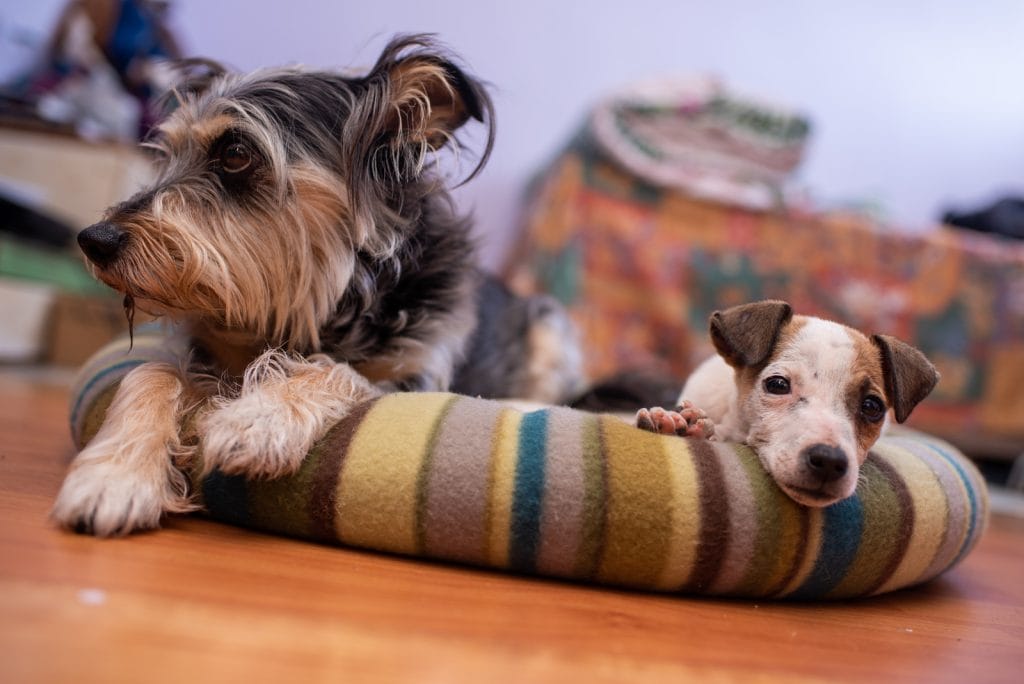
Environmental consciousness doesn’t stop at food and grooming, but extends to where and how your dog sleeps or manages its indoor life.
Eco-Friendly Dog Litter
- Puppy Go Potty Natural Paper Fiber Dog Litter: A biodegradable option, this litter absorbs moisture effectively and helps control odors naturally, making it an excellent choice for environmentally-conscious dog owners.
Eco-Friendly Dog Beds
- Avocado Organic Dog Bed: Utilizing organic materials such as cotton and latex, this bed offers a hypoallergenic, antimicrobial spot for your pet to rest.
- Nest Bedding: Offers customizable eco-friendly covers that you can fill with old clothes, reducing waste and creating a comfortable resting place.
- Molly Mutt: Features sustainable covers for DIY dog beds, encouraging the reuse of old textiles as fillings.
- Beco Pets Donut Bed: Made from recycled plastic bottles and sustainable fabric covers, it’s a cozy and eco-conscious choice.
- Harry Barker Grain Sack Dog Bed: Combines the durability of recycled plastics with the comfort of a lush hemp cover.
- Leah Singh Designer Dog Beds: Handmade to ensure quality and sustainability, filled with recycled plastic bottle material.
When choosing eco-friendly dog beds and litters, prioritize items that feature renewable, recycled, or upcycled materials. Try to avoid synthetic fillers and opt for natural or certified organic components to ensure safety and environmental responsibility.
Eco-Friendly Pet Waste Disposal

Use Biodegradable or Compostable Poop Bags
Choosing the right poop bags is crucial for eco-friendly dog care. Biodegradable or compostable bags are the best options, and those that meet the ASTM D6400 standard are recommended, as they break down under specific conditions in a reasonable timeframe. Corn-based bags are particularly eco-friendly, offering a sustainable alternative to regular plastic bags.
Compost the Waste
Composting dog waste is a viable option if done correctly. You can either buy a pet waste compost bin or make one yourself, even in a small garden. Set up the bin in a shaded area with good soil drainage. Combine the dog waste with other compostable organic materials, such as leaves and grass clippings. The resulting compost is excellent for non-edible plants, helping to enrich the soil naturally.
Bury the Waste
Burying pet waste is another method of disposal. Dig a hole at least 12 inches deep to ensure the waste is sufficiently covered and place it at least 5 feet away from any vegetable gardens, fruit trees, or water sources. Cover the waste with at least 8 inches of soil to safely compost down without affecting groundwater or edible plants.
Flush the Waste
Flushing dog waste down the toilet is considered one of the most sustainable methods of disposal, as per the EPA. Municipal water treatment systems are equipped to handle sewage and water containing fecal matter effectively. If you choose this method, ensure you use flushable poop bags made from water-soluble materials like Polyvinyl Alcohol (PVA). Note that this method is not suitable for homes with septic systems.
It’s essential to never leave pet waste on the ground. Not properly disposing of dog waste can lead to environmental pollution and health hazards. By choosing one of these eco-friendly methods—using biodegradable bags, composting, burying, or flushing the waste—you contribute to reducing the negative impact on the environment while keeping public spaces clean and safe.
DIY Eco-Friendly Pet Toys and Accessories
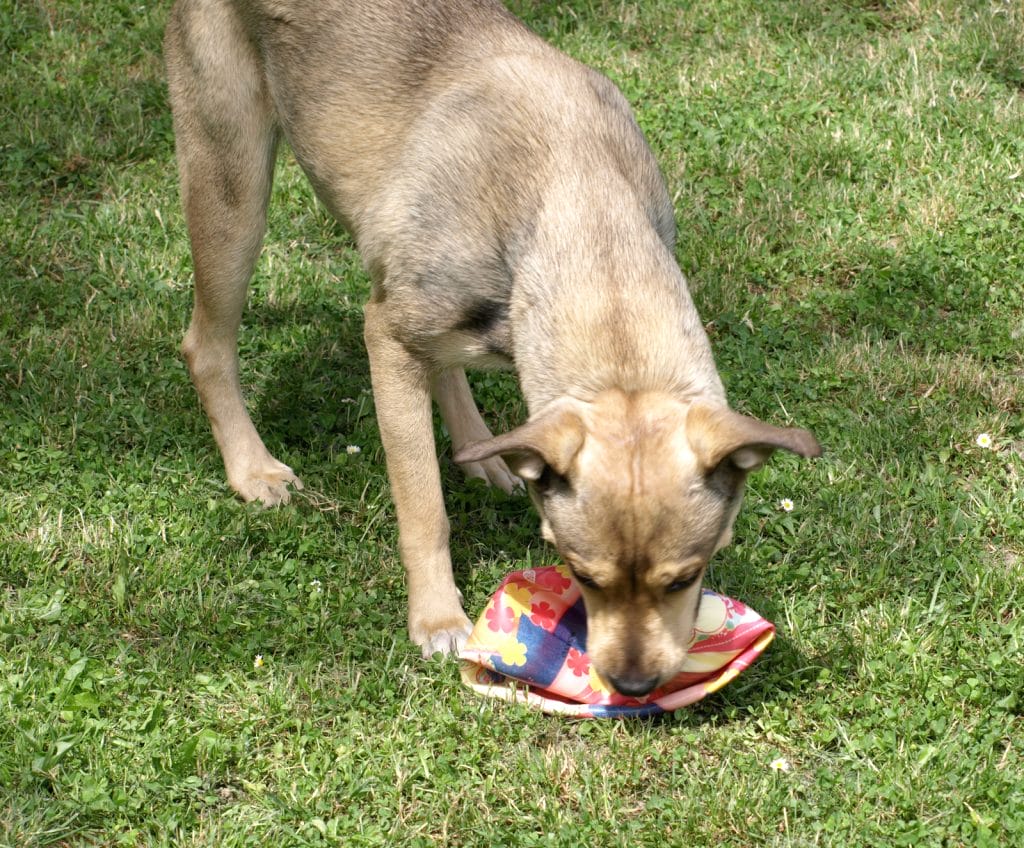
Creating toys and accessories for your pet doesn’t have to harm the planet. Here are some fun and sustainable ideas you can try at home using recycled materials. Let’s dive in!
Recycled Rope Toys
- T-Shirt Rope Toy: Cut old t-shirts, towels, or jeans into strips. Braid these strips tightly to make a sturdy rope. You can add knots along the length to create a fun, chewable toy for your dog.
- Knotted Rope: Using a long piece of old rope, tie multiple knots along its length. This makes a perfect chew toy that’s easy to make and tough enough for extended playtime.
Stuffed Toys
- Organic Cotton Stuffed Toy: You can sew a simple shape using organic cotton fabric. Fill it with natural materials like coconut fiber or wool to keep it eco-friendly.
- Upcycled Sock Toy: Got some old socks? Stuff them with catnip or a bit of stuffing to create a comfy cat toy. Just ensure there are no loose parts or holes that could cause a choking hazard.
Puzzle Toys
- Cardboard Box Treat Hider: Take a cardboard box and cut a few holes just big enough for your dog or cat to reach in. Hide some treats inside and watch them figure out how to get them.
- Treat-Filled Cardboard Tube: Stuff a cardboard toilet paper tube with treats, then fold down the ends to keep the goodies in. This simple toy can keep your pet entertained and mentally stimulated.
Chew Toys
- Leather Wrapped Rope Toy: Wrap a durable rope toy with strips of old leather or suede for an enhanced chewing experience. It’s tough and safe for strong chewers.
- Frozen Kong Treat: Fill a Kong-style toy with a mix of peanut butter and other treats. Freeze it to provide a challenging, long-lasting treat.
Accessories
- Homemade Collars and Leashes: Use materials like hemp or organic cotton, or repurpose old items like climbing ropes to make stylish, durable collars and leashes.
- DIY Pet Bed: Sew a cozy pet bed using organic cotton. Fill it with shredded old newspapers or recycled fiber for comfort.
By using these ideas, you not only save money but also help the environment. Avoid using materials that may be harmful or toxic. Always choose safe, durable options, and avoid items with small, detachable parts that could become choking hazards. With a bit of creativity, you can create fun, safe, and eco-friendly toys and accessories that your pets will love.
Natural Dog Remedies for Common Ailments

There are a lot of natural remedies for various dog health issues, including fleas and ticks, digestive problems, skin irritations, anxiety, joint pain, and ear infections.
For fleas and ticks, diluted essential oils like lavender and cedarwood, along with washing bedding in vinegar and water, are recommended.
Digestive issues may be addressed with yogurt or bland foods. Skin irritations can be soothed with oatmeal baths or aloe vera gel.
For ear infections, consider rinsing with vinegar and water and applying coconut oil.
Always consult your vet before trying new remedies, especially if your pet has health issues.
Dogs and Plants
When you own a dog, you might want to consider a couple of things, befor buying a new plant!
Many common garden plants pose toxicity risks to dogs, such as chrysanthemum and foxglove. If ingestion occurs, seek veterinary attention promptly.
While most plants are mildly toxic, precautions like fencing or raised beds can mitigate risks. Be mindful of your dog’s habits to prevent ingestion of toxic plants.
Explore dog-friendly options like rosemary, jasmine, and non-toxic houseplants to enhance your garden.
For puppies, provide ample chew toys and mental stimulation to deter plant chewing behavior.
Consider creating a pet-free zone in your garden as a last resort, but prioritize training and non-toxic plant choices.
Contact your vet immediately if you suspect plant ingestion, as symptoms vary and may include vomiting, diarrhea, and lethargy.
